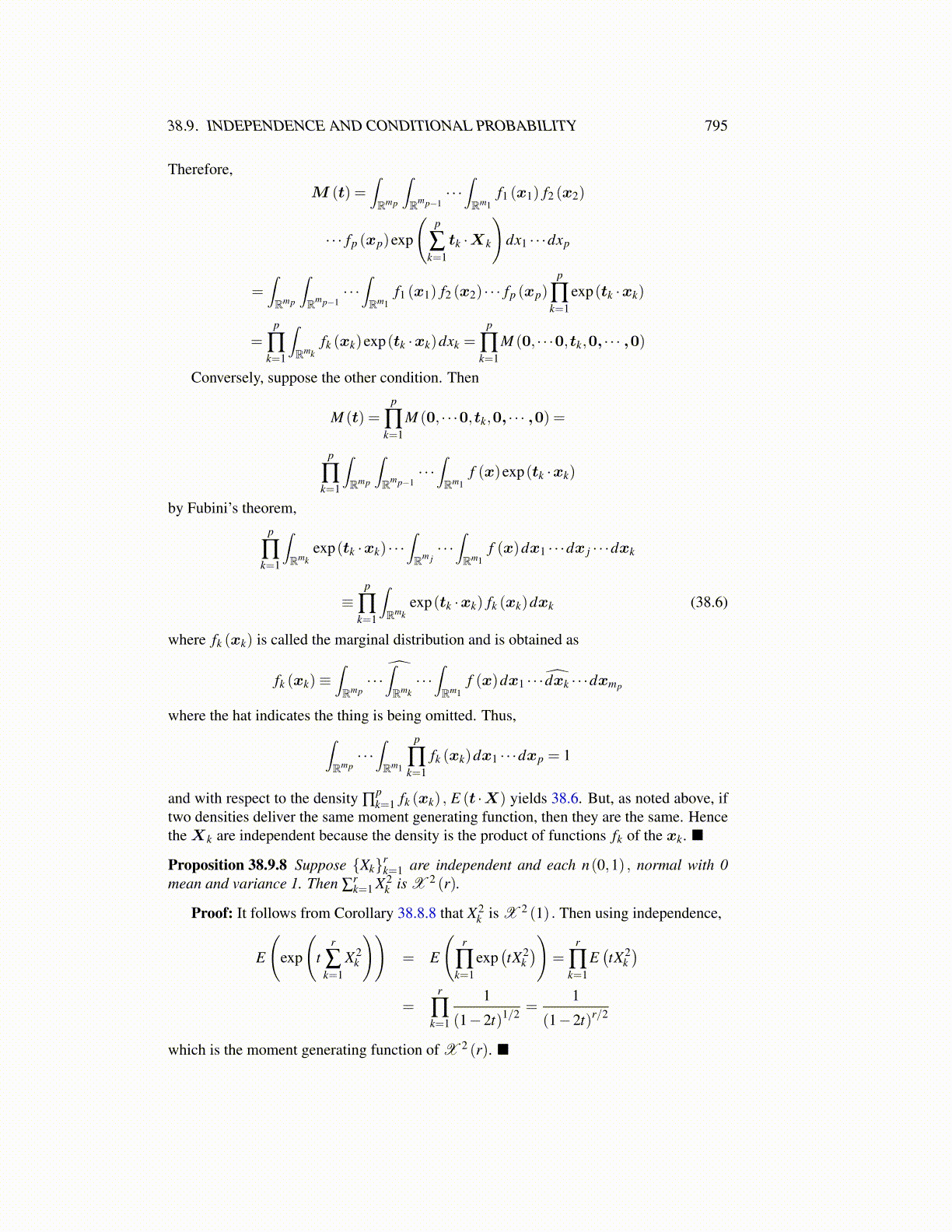
38.9. INDEPENDENCE AND CONDITIONAL PROBABILITY 795
Therefore,M (t) =
∫Rmp
∫Rmp−1
· · ·∫Rm1
f1 (x1) f2 (x2)
· · · fp (xp)exp
(p
∑k=1
tk ·Xk
)dx1 · · ·dxp
=∫Rmp
∫Rmp−1
· · ·∫Rm1
f1 (x1) f2 (x2) · · · fp (xp)p
∏k=1
exp(tk ·xk)
=p
∏k=1
∫Rmk
fk (xk)exp(tk ·xk)dxk =p
∏k=1
M (0, · · ·0,tk,0, · · · ,0)
Conversely, suppose the other condition. Then
M (t) =p
∏k=1
M (0, · · ·0,tk,0, · · · ,0) =
p
∏k=1
∫Rmp
∫Rmp−1
· · ·∫Rm1
f (x)exp(tk ·xk)
by Fubini’s theorem,p
∏k=1
∫Rmk
exp(tk ·xk) · · ·∫Rm j· · ·∫Rm1
f (x)dx1 · · ·dx j · · ·dxk
≡p
∏k=1
∫Rmk
exp(tk ·xk) fk (xk)dxk (38.6)
where fk (xk) is called the marginal distribution and is obtained as
fk (xk)≡∫Rmp· · ·∫̂Rmk· · ·∫Rm1
f (x)dx1 · · · d̂xk · · ·dxmp
where the hat indicates the thing is being omitted. Thus,∫Rmp· · ·∫Rm1
p
∏k=1
fk (xk)dx1 · · ·dxp = 1
and with respect to the density ∏pk=1 fk (xk) , E (t ·X) yields 38.6. But, as noted above, if
two densities deliver the same moment generating function, then they are the same. Hencethe Xk are independent because the density is the product of functions fk of the xk. ■
Proposition 38.9.8 Suppose {Xk}rk=1 are independent and each n(0,1) , normal with 0
mean and variance 1. Then ∑rk=1 X2
k is X 2 (r).
Proof: It follows from Corollary 38.8.8 that X2k is X 2 (1) . Then using independence,
E
(exp
(t
r
∑k=1
X2k
))= E
(r
∏k=1
exp(tX2
k))
=r
∏k=1
E(tX2
k)
=r
∏k=1
1
(1−2t)1/2 =1
(1−2t)r/2
which is the moment generating function of X 2 (r). ■